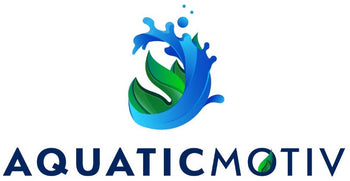Many people believe that liquid CO2 is a suitable replacement for a pressurized CO2 system, but it is not. Liquid CO2 is primarily an algaecide and does not contribute significant levels of available carbon into the aquarium. Some individuals report that it increases the plant’s ability to utilize CO2 by giving an alternative, but this has not been substantiated.
Throughout this article, we will look at some of the ingredients of liquid CO2 and break down what they do. One very important piece of information I want to point out is that there is no such thing as liquid CO2 in a plastic bottle. Carbon dioxide is only liquid in high-pressure environments, like when it's put in a CO2 canister.

The first thing to know about liquid CO2 is the main ingredient and what it is used for. The main ingredient for liquid CO2 supplements is the chemical glutaraldehyde. In commercial use, this chemical is used in the sterilization of medical equipment and many other applications involving sterilization. In aquariums, we use it in extremely diluted amounts and it creates an effective algaecide. In products like Seachem excel, it is the main ingredient and often used to negate algae growth which in turn gives plants more nutrient availability. That is one way in which Seachem excel and other liquid CO2 products aid in plant growth.

While most hardy species of plants will be fine with low-level excel dosing, it is possible that sensitive species will not tolerate liquid carbon dosing well. This is because of the harsh properties of glutaraldehyde. Various genus such as Limnophila, Cryptocoryne, Vallisneria, and also many species of moss will not tolerate moderate or heavy excel dosing well. For some of the listed species, they will melt as a result of liquid CO2 dosing. This includes Cryptocoryne. Vallisneria, and mosses. On the other hand, the stem species from the Limnophila genus will typically show damaged or stunted new growth as a result of liquid CO2 exposure.
One advantage of dosing the product seachem excel is that it makes iron more available for plants to consume. It turns the form of iron, FE+2 into FE+3 which is more easily utilized by plants. Given that iron is the most utilized micronutrient for plants, this will help with growth in iron-limited aquariums. The second effect of liquid co2 on plant health is to replace the need for gaseous carbon dioxide in the aquarium. The role of CO2 is to make longer chain carbon compounds that act as photosynthetic intermediaries. In a way, seachem excel will work to bypass the requirement of gaseous carbon by replacing these photosynthetic intermediaries directly.

Now to wrap up let's go over practical applications for these liquid CO2 products such as Seachem excel. The main use for these products is being an algaecide. You can either dose it into the water column and treat the whole tank for algae or if you have a species like cladophora or hair algae. You can draw it into a syringe and spray the recommended dose directly onto the affected plants, with the hopes of killing the algae. Depending on the type of algae, you may have to manually remove it before dosing the liquid CO2 product.
While there are some benefits to using Excel from a nutrient point of view. I do not recommend using it regularly, especially if you plan on growing one of the species of plant which are sensitive to Excel dosing.
For an algaecide, it is a great product to use; especially when combating the dreaded black beard algae.
Purchase Seachem Excell here.
Written by Jacob Thompson
Imagery by AquaticMotiv Llc

